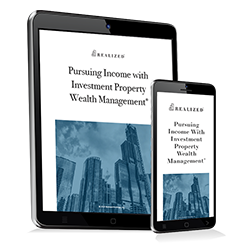
Intimidation may be one of the most significant obstacles to adequate retirement planning. According to the Transamerica Retirement Survey (conducted in 2020 by the Harris Poll), 42 percent of Americans admit that their biggest concern is that they will outlive their retirement savings and investments. Yet, despite that fear, 68 percent of those surveyed either strongly or somewhat agreed that they were building an adequate nest egg for retirement. The concern may be due to worries about whether the investments are safe and will grow enough to provide the needed income.
Where should investors allocate their savings?
There are numerous valid approaches to retirement savings. However, for those workers with access to an employer-sponsored retirement account like a 401(k), that’s typically the right place to start. The reason is that many companies will match a percentage of the employee’s contribution, which is “free” money.
For example, if you have a company-sponsored 401(k) account and divert 10 percent of your income to the account (subject to IRS limits on annual contributions), you start winning immediately. First, you are saving pre-tax dollars. For many people, this is an advantage since they expect their tax rate to be lower in retirement. If you think yours will be higher, you may want to consider a Roth conversion at some point.
Second, if you allocate ten percent of your income to the 401(k) and your employer matches 50 percent of your contribution, you immediately earn a 50 percent return. (Not precisely immediately, since most employer contributions are subject to vesting periods, but without doing anything).
Third, you can choose how to invest the funds. Most 401(k) accounts have a choice of several funds, often categorized by target retirement age or growth orientation. You can make it simple by selecting a fund designed to maximize the outcome for people retiring in the same year you intend. Or you can choose a fund that targets the allocation split you prefer, whether 80/20, 70/30, or something much more conservative.
How do investors decide how to allocate their portfolios?
Generally, investors typically want to maintain a balance between income pursuit and capital preservation. Where they are comfortable depends on their goals and risk appetite. Investors seeking higher returns may be willing to accept a higher risk level. It is unavoidable that investments with the potential for higher rewards carry the risk of loss. As a result, investors looking for appreciation may prefer a more substantial concentration in equities and less in fixed income. In contrast, investors concerned about not losing money may incline toward fixed income and put less or no capital in stocks.
In addition to maintaining balance among asset classes, a retirement portfolio allocation strategy will incorporate diversity in stocks, sectors, and industries. For example, one asset allocation strategy is to move gradually from an aggressive (growth-oriented, concentrated in equities) approach to a more conservative approach (more investment in bonds and other fixed income instruments) as you age. Investors unsure of the best path for their portfolio may want to seek financial guidance.
This material is for general information and educational purposes only. Information is based on data gathered from what we believe are reliable sources. It is not guaranteed as to accuracy, does not purport to be complete and is not intended to be used as a primary basis for investment decisions.
Realized does not provide tax or legal advice. This material is not a substitute for seeking the advice of a qualified professional for your individual situation.
Examples are hypothetical and for illustrative purposes only. Withdrawal strategies should take into account the investment objectives, financial situation and particular needs of the individual.
Past performance is not a guarantee or indication of future results. All investments have an inherent level of risk. The value of your investment will fluctuate with the value of the underlying investments. You could receive back less than you initially invested and there is no guarantee that you will receive any income.



